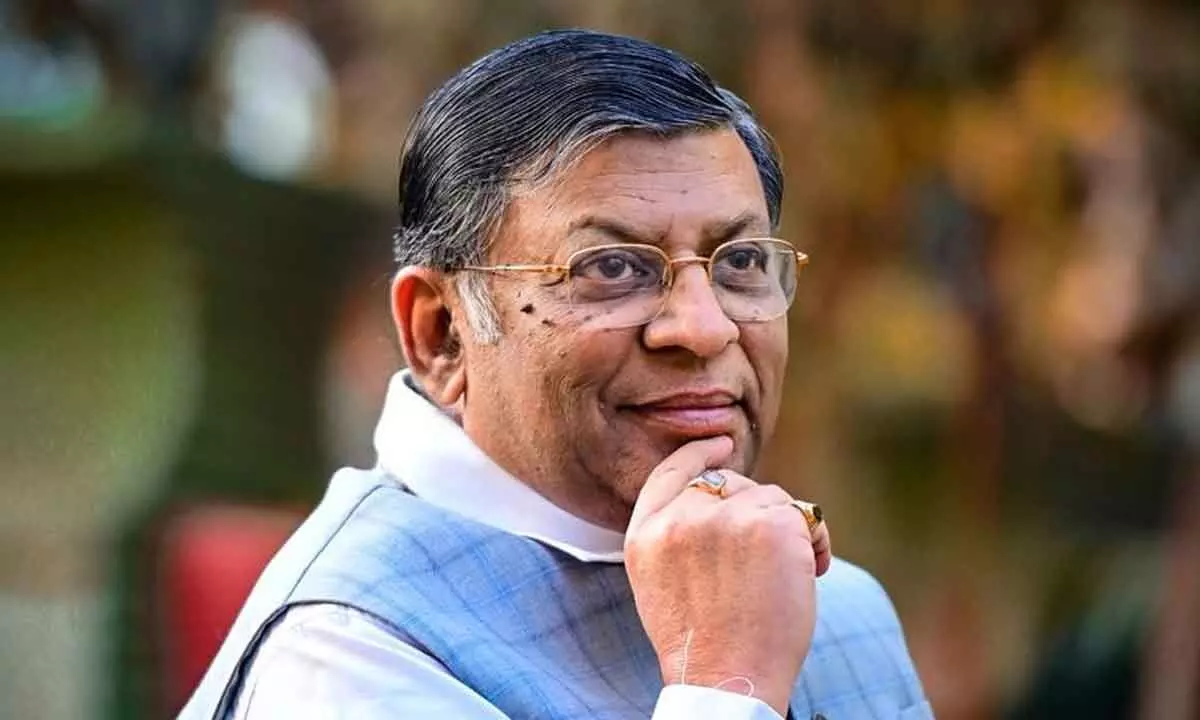Investment in fixed assets crucial for long-term economic growth
Regulatory ease, easy bank credit, and a vibrant capital market are essential for boosting private investment, says RP Gupta, Director of Shiva Cement Ltd
image for illustrative purpose

From successfully implementing electrical turnkey jobs to setting up and running of cement manufacturing units and subsequently running iron ore beneficiation plant - he has seen and done it all. But RP Gupta, an engineering graduate by training from NIIT, Rourkella (Odisha), has always found more joys and satisfaction in finding viable solutions for achieving higher growth of public income through his studies, research and insightful writing. His passion is in the writing on Indian Economy since about 15 years. He believes that; the hidden growth potential of India is too large. His lifetime wish is that; per capita income of India exceeds world average. His recent book “Turn Around India” was released by Nerandra Modi, giving acknowledgement to his insights and vision. Speaking exclusively to Bizz Buzz, RP Gupta, Director of Shiva Cement Ltd and Advisor of Shivom Minerals Ltd and industrialist-turned author, shares his thoughts on a wide range of issues facing the Indian economy and India’s socio-economic structure
A comparative study on GDP often gives you some clarity about the economic progress and growth. So what was India's GDP growth rate in FY17, and how does it compare to FY20 and FY23?
India's GDP growth rate in FY17 stood at 8.3 per cent, but it gradually declined to 3.7 per cent in FY20 (pre-pandemic). However, in FY23, India achieved a growth rate of 7.2 per cent, largely due to the low-base effect from the pandemic years.
Explain the concept of Gross Fixed-Capital Formation (GFCF) and its significance for achieving consistent GDP growth.
Gross Fixed-Capital Formation (GFCF) refers to the investment in fixed assets such as machinery, equipment, buildings, etc., aimed at increasing the productive capacity of the economy. It is significant for achieving consistent GDP growth as it contributes to long-term economic expansion by boosting productivity and efficiency.
What is the relationship between Incremental-capital Output Ratio (ICOR) and GDP growth? Could you please provide examples from different time periods?
The Incremental-capital Output Ratio (ICOR) measures the efficiency of capital deployed for increasing output (GDP). In one of my recent articles, I have pointed out that during different periods, such as 2014-18 and FY-2004-08, when the average ICOR remained below 4.25, the average GDP growth rates were 7.6 per cent and 7.2 per cent respectively, indicating a positive relationship between ICOR and GDP growth.
Why do you suggest prioritising investment in productive-assets and commercial infrastructures over defense and social infrastructures?
I suggest prioritising investment in productive-assets and commercial infrastructures over defense and social infrastructures because the former contribute directly to GDP growth by generating economic output and improving efficiency for exports, thereby fostering higher growth rates.
How has the share of bank credit to the industry sector changed from 2013-14 to 2021-22, and what implications does this shift have on GDP growth?
From 2013-14 to 2021-22, the share of bank credit to the industry sector decreased from 44.7 to 26.5 per cent, with a notable decline in credit to the MSME industry to 6.6 per cent. This shift implies a potential decrease in GFCF vis-à-vis GDP growth in the coming years due to reduced investment in productive assets and commercial infrastructures.
What recommendations would you make for boosting private investment in India?
I would recommend boosting private investment in India by ensuring regulatory easement, liberal bank credits, and a vibrant capital market. I suggest focusing on production-linked credits rather than consumption-linked credits to prioritise economic growth during the developmental phase.
How does India's market capitalisation compare to China's, and what factors contribute to India's reliance on global funds?
India's market capitalisation is about 110-115 per cent of GDP, compared to 54-55 per cent in China. However, India's gross bank credit is only around 50-51 per cent of GDP, leading to a reliance on global funds due to low savings rates, particularly in financial assets.
What challenges do MSMEs face in raising capital, and why do you argue for prioritising credit to this sector?
MSMEs face challenges in raising capital, as they cannot easily access the capital market. I always argue for prioritising credit to this sector due to its significant job creation potential with lower capital requirements and lower Incremental-capital Output Ratios (ICOR).
What suggestions do you make for attracting global investment in India, particularly in terms of monetary and fiscal policies?
I would suggest attracting global investment in India through measures such as moderating rupee depreciation, encouraging long-term funds raising through bonds and equity by PSUs, banks, and large corporates, and adopting business-friendly taxation and regulatory laws
What are the key factors you identify for achieving consistent GDP growth of 7-8 per cent, and what additional reforms are needed for achieving double-digit growth?
Key factors identified for achieving consistent GDP growth of 7-8 per cent include propelling Gross Fixed-Capital Formation (GFCF) above 35 per cent of GDP, maintaining Incremental-capital Output Ratio (ICOR) below 4.25, and prioritising investment in productive-assets and commercial infrastructures. Additional reforms mentioned for achieving double-digit growth include structural reforms.

